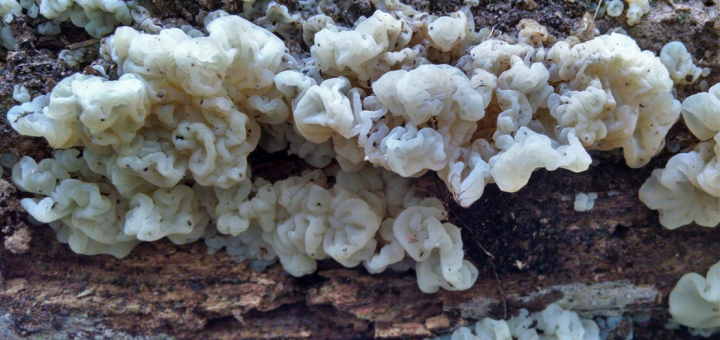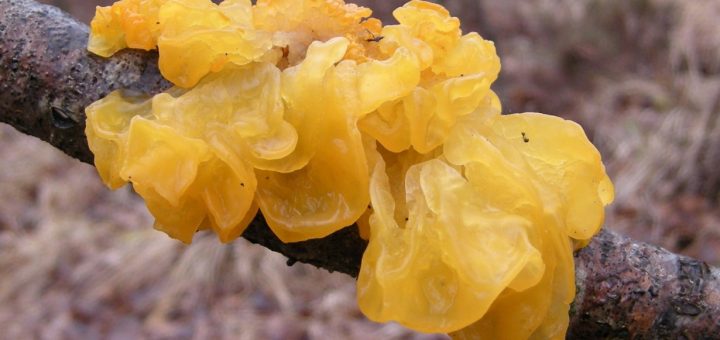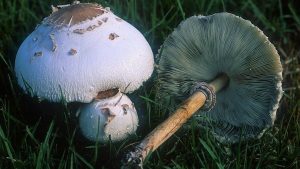#216: Ductifera pululahuana
In my area, Ductifera pululahuana is the second most common jelly fungus (after the Wood Ear, FFF#134) that appears in late spring or early summer. It is a strikingly white mushroom that grows in clusters of densely-packed irregular lobes. This shape reminds me of something in between popcorn and fluffy mashed potatoes. Despite this airy appearance, D. pululahuana is rather dense and thick, especially compared to other jelly fungi. I find the ten-syllable scientific name difficult to remember, especially after not using it at all over the winter. When I forget the name, I fall back on the out-of-date name Exidia alba. It’s much easier to remember and refers to the same mushroom, even if it’s incorrect today. The mushroom also goes by the common names “Pale Jelly Roll” and “White Jelly Fungus,” but I’ve never heard those used.









![#011: Characteristics of Kingdom Fungi [Archived]](https://www.fungusfactfriday.com/wp-content/themes/hueman/assets/front/img/thumb-small-empty.png)

